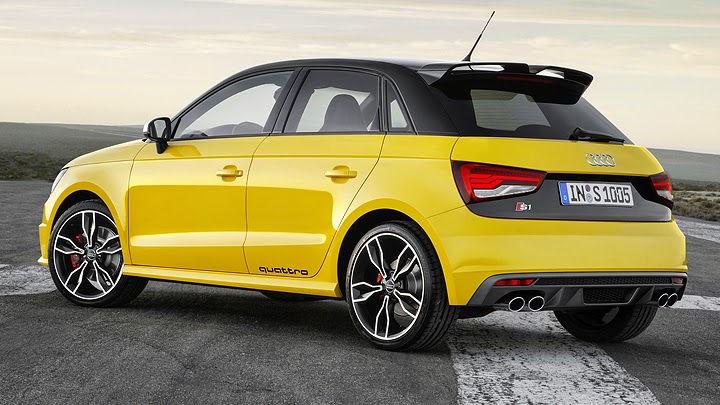
What makes this hatchback interesting, for both Audi and people, is its market placement. Being a luxury supermini creates direct competition with cars such as DS 3 and Mini Cooper. Since all of these share many components with other models produced by their respective manufacturers, it’s possible to charge premium prices and enjoy reduced costs at the same time. Besides all that, A1 represents a new initial step into the Audi range, which used to be A3’s role. Those who used to buy competitors like those or even more rational vehicles, such as sedans and SWs, can be easily tempted to make the same investment in an option which is smaller, but much more pleasant to drive and that delivers all the level of quality associated with this company.
A1’s midlife updates intend to improve people’s perception of the same vehicle, rather than trying to convince them it’s a new one. The front fascia had its signature grille slightly retouched, while the headlights did the same with the internal design – Audi’s latest technologies in this area won’t go that far in the lineup yet. The sides received a new set of wheel designs and new color patterns for roof and side arches. The rear, in turn, features internally-refreshed LED lights. Most of these changes were anticipated by the sporty variation S1 a couple of weeks ago. The intention, even with the conventional ones, was to differentiate them by making them look sportier than the French vehicle and slightly “tougher” than the English one.










Other news concern new color options and trim levels, but those who want more interesting ones have to open A1’s hood, rather than its doors. There are two TDI and four TFSI engines, and they are all either new or renewed. From the first group, the 1.4L received many mechanical updates dedicated to fuel efficiency, which brought an European-cycle consumption of 29.4 kpl and 94 g/km of carbon dioxide – these numbers get slightly worse with the Sportback five-door body and slightly better with the S-Tronic seven-speed, dual-clutch gearbox. The 1.6L, in turn, remains as the performance-oriented option with this fuel, although it received similar upgrades as the previous one. This unit is good for 116 hp, 184.4 lb-ft, 28.6 kpl and 92 g/km.
When it comes to the other engines, Audi’s spotlights go to the three-cylinder 1.0L, which is the very first of its kind for Audi. Its huge level of technology enabled features such as 88-kg of base weight, 95 hp of power and 118 lb-ft of torque, which resulted in 23.2-kpl consumption and 103-g/km emission. The 1.4L unit, in turn, is good for 125 hp and 147.5 lb-ft and can deactivate up to two of its four-cylinders in cases of low power demand so as to save fuel. The performance option is a 1.8L unit, capable of 192 hp and 184.4 lb-ft, but if you really want to drive fast, your car is actually S1: this one features an exclusive TFSI 2.0L with 231 hp and 273 lb-ft, goes from 0 to 100 kph in 5.8 seconds and to a top speed of 250 kph. These cars go on sale in a few months.